This is the web page of the Medicine and Health track of the ABCP 2022 Annual Conference, to be held on Friday 1st and Saturday 2nd July 2022.
PROGRAMME
Day 1: Friday 1st July 2022
(In-person: 109 / Virtual: Zoom link OR Webinar ID = 848 6568 5870 + Passcode = 617263)
| 01:30-02:45pm | Session 1, Chaired by Professor Daqing Ma, MD, PhD, FRCA, MAE, Imperial College London, UK |
| 01:30-01:55pm | Toward Early Treatment of OA: Joggle Between Engineering and Medicine Professor Chaozong Liu, UCL Institute of Orthopaedics and Musculo-Skeletal Science, The Royal National Orthopaedic Hospital, University College London (UCL), UK show more/less
Abstract: To be added. 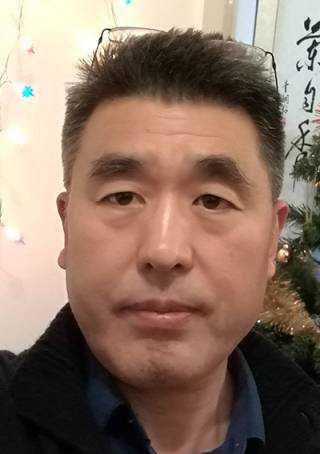 Professor Chaozong Liu Bio: To be added. |
| 01:55-02:20pm | Applications of iPSCs in Modelling Genetic Cerebral Small Vessel Diseases and Beyond Professor Tao Wang, Institute for Collaborative Research on Ageing, Faculty of Biology, Medicine and Health, University of Manchester, UK show more/less
Abstract: Small vessel disease (SVD) is a group of conditions that affect micro-vessels of the cardiovascular system. Cerebral SVD accounts for a quarter of all strokes and is a major cause of cognitive impairment in elderly, becoming the second leading cause of dementia after Alzheimer’s disease. Due to incomplete understanding of the molecular mechanisms of the disease, there have not been specific treatments. Using genetic form of SVD as human disease models in combination with induced pluripotent stem cell (iPSC) and CRISPR gene editing technologies, we aim to understand how the vascular pathology leads to neural dysfunction. We have established a number of genetic iPSC SVD disease models and started to understand the functional interactions of neurovascular cell types and how these were impaired by disease-causing mutations in areas such as angiogenesis, cell growth and survival, and the blood-brain barrier function. By interrogating the patient-specific iPSC disease models, our ultimate aim is to identify disease biomarkers and drug targets. Beyond SVD, we have applied iPSCs in other medical research areas including vascular tissue engineering and lung organoids.  Professor Tao Wang Bio: Tao Wang is professor of Molecular Medicine in the University of Manchester. She is Fellow of Royal Society of Medicine, Fellow of Royal Society of Biology, and Senior Fellow of Higher Education Academy. She is also an Honorary Professor of Genomics at Manchester Centre for Genomic Medicine in Central Manchester University Hospitals NHS Foundation Trust, and a Guest Professor in Peking University Health Science Centre (PUHSC). She worked as a Cardiologist at Peking University Third Hospital in 1986-1992 and received PhD degree in cardiovascular medicine in 1991 in PKUHSC where her research work received National Science and Technology Award (1995) and Achievement Award from National Education Commission (1992) in China. She joint University of Cambridge in 1992 working as Postdoc in Department of Medicine until 2003 when she moved to the University of Manchester. She sits on Editorial Boards for a number of international scientific journals. Her research interests are in the molecular basis of cardiovascular diseases, focusing on genetic small vessel disease (SVD) and vascular dementia. She utilises patient-specific induced pluripotent stem cells (iPSCs) as a model system to study a range of genetic SVD in order to understand the complex neurovascular interactions and blood-brain barrier (BBB) function in physiological and pathophysiological conditions. Her research also in the areas of vascular tissue engineering and nano-medicine. |
| 02:20-02:45pm | Cryo-EM Structures of Tau Filaments in Human Neurodegenerative Diseases Dr Wenjuan Zhang, MRC Prion Unit and Institute of Prion diseases, University College London (UCL), UK show more/less
Abstract: The ordered assembly of microtubule-associated protein tau into abnormal amyloid filamentous inclusions underlies many human neurodegenerative diseases, called tauopathies. Tau inclusions display distinct cellular and neuroanatomical distributions in different tauopathies. Six tau isoforms are expressed in the normal adult human brain-three isoforms with four microtubule-binding repeats each (4R tau) and three isoforms that lack the second repeat (3R tau). In various diseases, tau filaments can be composed of either 3R or 4R tau, or of both. Morphological and biochemical differences suggest that tau filaments adopt disease-specific molecular conformations, which may give rise to different neuropathological phenotypes, like prion strains. Using cryo- electron microscopy, we recently reported the structures of tau filaments from patients with Alzheimer’s disease and chronic traumatic encephalopathy, which contain both 3R and 4R tau, as well as from patients with Pick’s disease, which contain 3R tau only. Here we determine the structures of tau filaments from patients with corticobasal degeneration, progressive supranuclear palsy, globular glial tauopathy, argyrophilic grain disease, inherited cases of mutations at positions +3 or +16 in intron 10 of MAPT (the microtubule-associated protein tau gene), which contain 4R tau only. These findings show how tau can adopt distinct folds in the human brain in different diseases and suggest a hierarchical classification of tauopathies on the basis of their filament folds, which complements clinical diagnosis and neuropathology and also allows the identification of new entities. We also found heparin induced in vitro aggregation yields different structures from those observed in brain. Tau isoform composition, post-translational modifications or interactions with cofactors may determine which structures are formed in brain. 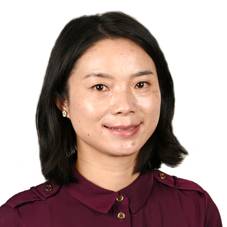 Dr Wenjuan Zhang Bio: I obtained my PhD in Biochemistry and Molecular Biology at the University of Science and Technology of China (USTC) in Dec 2013. After graduation, I moved to London to work as a post-doctoral researcher in Dr. Cara Vaughan’s group in the Institute of Structural and Molecular Biology, University College London and Birkbeck College. In June 2017, I joined the laboratories of Drs. Sjors Scheres and Michel Goedert at the MRC Laboratory of Molecular Biology in Cambridge as a Career Development Fellow, where I fortunately got trained on the structural determination of amyloid fibrils using RELION and studied on the cryo-EM structures of tau filaments from human tauopathies. I joined MRC prion unit at UCL in July 2021 as a senior research fellow and group leader. Our group focus on elucidating the structures and mechanisms of prion-like protein assemblies in neurodegenerative diseases using an integrated biochemical, cellular and structural approaches, especially cryo-electron microscopy, and yeast model. |
| 02:45-04:00pm | Session 2, Chaired by Professor Shouqing Luo, Peninsula Medical School (Faculty of Health), University of Plymouth, UK |
| 02:45-03:10pm | Stimuli-Responsive Polymer 3D-Scaffolds Guide Cell Fate for Soft Tissue Regeneration Professor Wenhui Song, The UCL Centre for Biomaterials in Surgical Reconstruction and Regeneration, Division of Surgery and Interventional Science, University College London (UCL), UK show more/less
Abstract: The cellular microenvironment is dynamic, remodeling tissues lifelong. The biomechanical properties and morphology of the extracellular matrix (ECM) influence the function and differentiation of cells and stem cells. While conventional artificial matrices or scaffolds for tissue engineering are primarily static and passive models presenting well-defined stiffness, they lack the responsive changes required in dynamic physiological settings. Engineering synthetic scaffolds with varying elastic moduli is possible, but often lead to stiffening and chemical crosslinking of molecular structure with limited control over scaffold architecture. The presentation will give an overview about recent development of thermal-responsive elastomer scaffolds with tuneable stiffness and hierarchical structure. The different cellular responses and differentiation during the stiffness relaxation of 3D printed scaffolds in vitro and in vivo have been systematically studied. The stiffness relaxation is found to regulate proliferation and differentiation of human bone-marrow derived mesenchymal stem cells (hBM-MSCs) towards the chondrogenic and osteogenic lineages. The optimised epithelium of human bronchial epithelial cells co-culture with hBM-MSCs on the functionalised scaffolds demonstrate layered respiratory-like tissue. The results offer a reproducible patient-specific approach to generate physiologically relevant 3D biomimetic systems and advance our understanding of soft tissue regeneration for drug discovery, organ regeneration and surgical reconstruction. 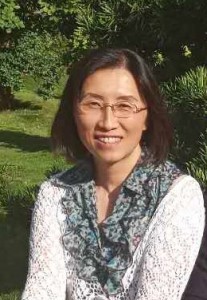 Professor Wenhui Song Bio: Wenhui Song is Professor of Biomaterials and Medical Engineering and head of the UCL Centre for Biomaterials in Surgical Reconstruction and Regeneration, Division of Surgery and Interventional Science, University College London. She completed her PhD and postdoctoral research fellow at the University of Cambridge, and started her academic career as lecturer and senior lecturer in Brunel University, London. Before coming to UK, she was Research Assistant and Assistant Professor in the Institute of Chemistry, Chinese Academy of Sciences after her study of MSc and BEng at Beihang University. She specialises in macromolecular materials, nanomaterials, nanocomposites and biomanufacturing for tissue engineering and regenerative medicine. Currently she is coordinating and participating a number of major multi-disciplinary projects funded by EPSRC, BBSRC, Royal Society, Wellcome Trust, BHF, GSK, working on the development of artificial tissues/organs, implantable biosensors and devices. She has authored/co-authored over 80 highly-cited publications including Science, Nature, Advanced Materials, Biomaterials and 4 book chapters. |
| 03:10-03:35pm | Ways to Die and Life After Death: How Cells Do Their Tricks Dr Yun Fan, Structural and Molecular Cell Biology, School of Biosciences, University of Birmingham, UK show more/less
Abstract: Balanced cell death and cell proliferation is critical for the maintenance of tissue homeostasis in multicellular organisms. Intriguingly, apoptosis and necrosis, two major forms of stress-induced cell death, are frequently interlinked and tightly controlled. How do cells choose one way or the other to die? How do dying cells communicate with their neighbours to stimulate tissue recovery? What are the implications of these cellular phenomena in human diseases including cancer? This talk will introduce our research on these topics using Drosophila as a model organism.  Dr Yun Fan Bio: Dr Fan was initially trained as a molecular biologist in China. He then completed his PhD in the field of Neurobiology in Switzerland. He subsequently worked at the University of Texas MD Anderson Cancer Center and the University of Massachusetts Medical School in the US before he moved to Birmingham in the UK. He is now an associate professor in the School of Biosciences at the University of Birmingham. His research interest centres on understanding how cell death, cell proliferation and cell differentiation are coordinated to maintain tissue homeostasis, and its implications for cancer development and tissue regeneration. |
| 03:35-04:00pm | Neuroimaging Biomarkers of Neurodegenerative Dementia Across Lifespan Professor Li Su, Institute for Translational Neuroscience, University of Sheffield, UK show more/less
Abstract: (Background) Dementia currently affects over 850,000 people in the UK, costs the UK £26 billion a year, and is estimated to increase to over 1 million people by 2025 with increasing life expectancy (Alzheimer’s Society 2015 reports). Pivotal to responding to this “time bomb” are biomarkers that predict susceptibility to dementia. Neural degeneration and dysfunction leading to dementia may begin decades before symptoms and cognitive decline present. Hence, the recognition of early imaging markers of dementia across different stages of lifespan may allow more effective intervention or even prevent dementia from happening. (Methods and Results) Here, I will present current and recent neuroimaging research conducted in my lab and collaborating centres nationally (Cambridge, Oxford, Imperial and Edinburgh) and internationally (Dublin and China) in seeking for potential early neuroimaging biomarkers for neurodegenerative dementia. I combine multimodal imaging with genetics as well as machine learning methods to reveal neural mechanisms underlying dementia, and how risk factors (e.g. family history of dementia, APOE and MAPT genotype) affect brain structure, functions and behaviours across lifespan including in young and mid aged individuals as well as established patients with dementia. (Conclusions) Multimodal imaging and genetics have the potential to identify early changes in brain structure and functions decades before clinical symptoms occur. 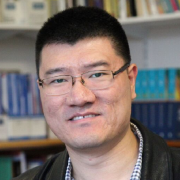 Professor Li Su Bio: Professor Li Su is Chair of Neuroimaging and the Head of the Artificial Intelligence and Computational Neuroscience Group. He has a joint appointment at the Neuroscience Institute, University of Sheffield and the Department of Psychiatry, University of Cambridge. Spanning over two universities, he leads a multi-disciplinary research group with members from neuroscience, psychology, medical, mathematics and computer science backgrounds. His research aims to combine innovative and original computational methods with the state-of-the-art brain imaging techniques (MEG/EEG, 7T MRI and PET) in understanding, detecting and developing treatments for neurological and psychiatric conditions. He is a Fellow at Clare Hall, University of Cambridge and a Specialist Committee Member at National Institute for Health and Care Excellence (NICE). He is the regional lead for the Alzheimer’s Research UK Network Centre and the National Network for the Application of Data Science and AI to Dementia Research (DEMON). He is an Associate Editor for Frontiers in Computational Neuroscience and a member of Alzheimer’s Society’s Research Strategy Council. He has published several high impact papers, many of which have been widely cited and made a real impact on the field. Professor Su has been awarded several grants and fellowships including a prestigious senior fellowship from Alzheimer’s Research UK. In 2015, he was given the International College of Geriatric Psychoneuropharmacology Junior Investigator Award. |
Day 2: Saturday 2nd July 2022
(Virtual: Zoom link OR Webinar ID = 886 3344 6822 + Passcode = 544829)
| 01:30-02:35pm | Session 3, Chaired by Professor Wenhui Song, The UCL Centre for Biomaterials in Surgical Reconstruction and Regeneration, Division of Surgery and Interventional Science, University College London |
| 01:30-02:10pm | Keynote: From Brain Data to Brain Simulation: Medical Applications Professor Jianfeng Feng, Institute of Science and Technology for Brain-Inspired Intelligence, Fudan University, China show more/less
Abstract: With the availability of data in the human brain at genetic, MRI imaging, behavioural and environmental scale, we are in the position to look into many issues both in public health and medicine. We will first show you how we can develop novel AI algorithms to answer some fundamental questions such as sleep durations, social isolation etc. and to subtype a few brain diseases such as depression, schizophrenia and Parkinson etc. As a consequence, such studies also help us gain some novel insights into the function of a few brain regions. Based on these results, we will also introduce a computational platform (digital twin brain, TWB) for testing various medical experiments. 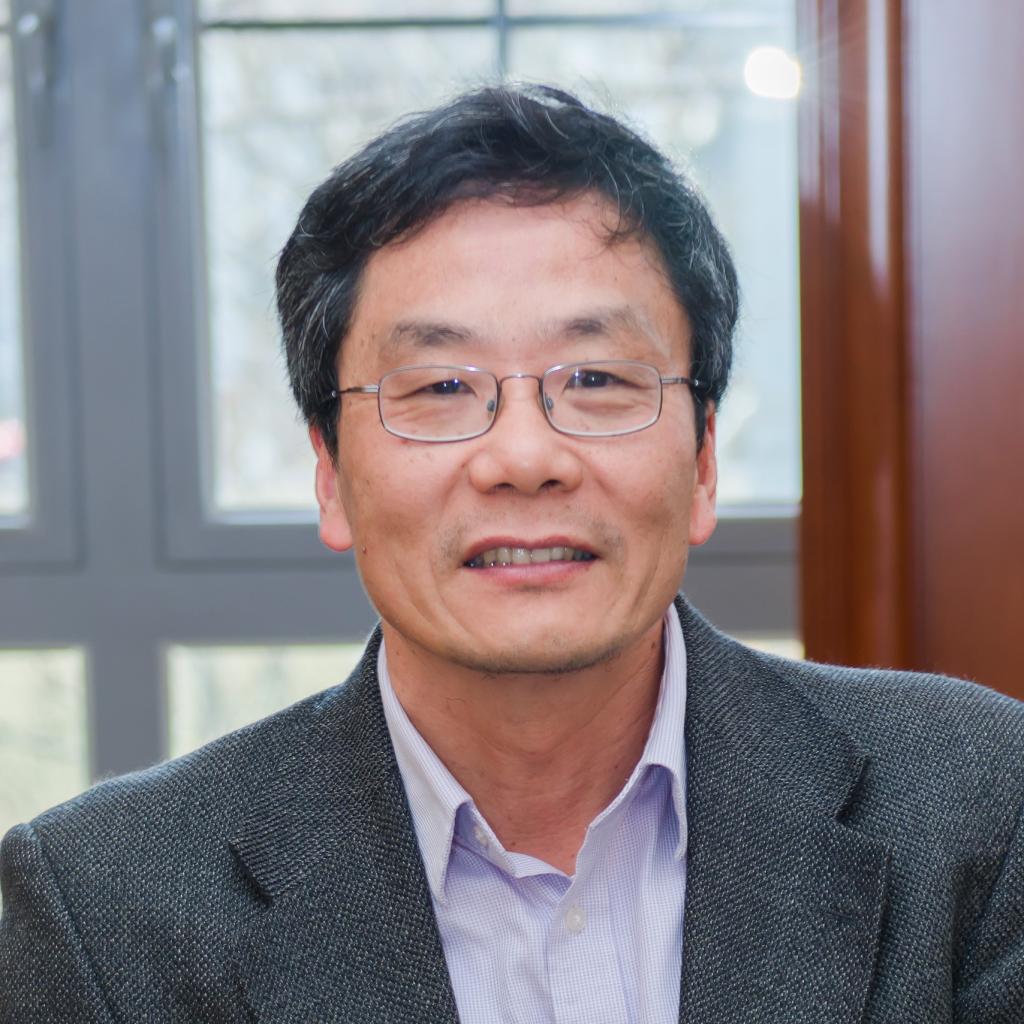 Professor Jianfeng Feng Bio: Jianfeng Feng is a Distinguished Professor of Chang Jiang Scholars Program, the chair professor of Shanghai Centre for Mathematical Sciences, and the Dean of School of Data Science and Institute of Science and Technology for Brain-inspired Intelligence in Fudan University. He was awarded the Royal Society Wolfson Research Merit Award in 2011, and invited to deliver 2019 Paykel Lecture at the Cambridge University. He has been developing new mathematical, statistical and computational theories and methods to meet the challenges raised in neuroscience and mental health researches. Recently, his research interests are mainly in big data analysis and mining for neuroscience and brain diseases. He has made considerable contributions on modelling single neurons and neuronal networks, machine learning, and causality analysis with publications on Nature series, Science series JAMA series, PRL, IEEE TPAMI, etc. |
| 02:10-02:35pm | Better Multi-Disciplinary Treatment for Liver Cancer Dr Jun Cao, Sun Yat-sen Memorial Hospital, Sun Yat-sen University, China show more/less
Abstract: I will give a brief account of the importance of Multi-Disciplinary Treatment for Liver Cancer. Then I’ll focus on the distinguishing characteristics of liver cancer MDT model between China and UK. In the end, I will discuss the future development of Liver cancer MDT in China.  Dr Jun Cao Bio: Jun Cao is an Associate Professor of Hepatobiliary surgery at Sun Yat-sen Memorial Hospital, Sun Yat-sen University. He is Vice Director of ALPPS Academic Group and Secretary of Gastrointestinal Oncology Committee, Chinese Society of Research Hospitals. He has presided over a number of National Natural Science Foundation of China, Guangdong Natural Science Foundation of China and Wu Jieping Medical Foundation’s Special funding for clinical research. He has won the prize of “Chinese Young Surgical Scholar Award”, “Chinese Surgical Golden Finger Award”, and “Top Ten Young Researchers” of Chinese Medical Association. His main research interest include minimally invasive surgical treatment and systematic treatment of hepatocellular carcinoma. |
| 02:35-02:40pm | Break |
| 02:40-04:00pm | Session 4: Career Development in Life Sciences, Chaired by Dr Huiliang Li, University College London (UCL), UK |
| 02:40-03:00pm | Replication Stress-Induced Mitotic Bypass and Whole Genome Duplication Mr Jingkun Zeng, Boehringer Ingelheim Fonds PhD fellow, Francis Crick Institute, UK show more/less
Abstract: Whole genome duplication (WGD) is a frequent event in cancer evolution and an important driver of aneuploidy. The role of the p53 tumour suppressor in WGD has been enigmatic: p53 blocks proliferation of tetraploid cells, acting as a barrier to WGD, but can also promote mitotic bypass, a key step in WGD via endoreduplication. In wild type p53 tumours, WGD is frequently associated with activation of the E2F pathway, especially amplification of CCNE1, encoding cyclin E1. Here we show that elevated cyclin E1 expression causes replicative stress, which activates Chk1-dependent G2 phase arrest. After prolonged arrest, p53, via its downstream target p21, then promotes mitotic bypass. Cyclin E expression suppresses p53-dependent senescence after mitotic bypass, allowing cells to complete endoreduplication. We further show that other oncogenes including HRasV12, can induce endoreduplication via replicative stress. Our results support a positive role for p53 in cancer evolution through WGD. 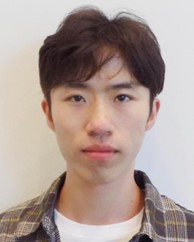 Mr Jingkun Zeng Bio: Jingkun Zeng is a doctoral candidate at the Francis Crick Institute, holding the Boehringer Ingelheim Fonds PhD fellowship. Before PhD, he graduated from Imperial College London with the best undergraduate research project award in Biochemistry. |
| 03:00-03:30pm | Chloride, the “Janus Factor” of Antibiotic Resistance Causing Beta-Lactamases Dr Yi Jin, Wellcome Trust Sir Henry Dale Fellow, Manchester Institute of Biotechnology, University of Manchester, UK show more/less
Abstract: To be added.  Dr Yi Jin Bio: Yi Jin received her BSc in Chemistry in 2005 and MSc in Organic Chemistry in 2008 both from Xiamen University, China. In 2008, she was awarded a prestigious Overseas Research Studentship funded by British Council for PhD research in enzymology at University of Sheffield with Professors Jon Waltho and Mike Blackburn. After her PhD, she continued as a postdoctoral researcher in the same group, before moving to the York Structural Biology Laboratory in 2014, joining Professor Gideon Davies FRS as a postdoc. In 2017, she was appointed as a principle investigator and University Research Fellow at Cardiff University and launched her independent research career. She has been awarded a Wellcome Trust Seed Award, a Royal Society Research Grant, and an Academy of Medical Sciences Springboard Award. In August 2021, she moved to Manchester Institute of Biotechnology with her Wellcome Trust Sir Henry Dale Fellowship to start an exciting new page of her career. Her interdisciplinary research now addresses vital challenges in bacterial persistence, antibiotic resistance, sepsis, and human-gut relationships. It uses techniques in organic and chemoenzymatic synthesis, computational, structural and chemical biology. Yi Jin strongly supports the promotion of women in science and public engagement. |
| 03:30-04:00pm | Lipid-Immune Interactions and Barrier Inflammation Dr Chengcan Yao, Reader / MRC Career Development Award Fellow, Centre for Inflammation Research, University of Edinburgh, UK show more/less
Abstract: Inflammation at the barrier line is triggered by exogenous stimuli such as infections, toxins and mechanical injury. Proper inflammatory responses are required for the host defence against external invasions and help improve tissue repair post damage. However, unchecked and continuous inflammatory responses promote chronic inflammation and barrier dysfunction. Immune cells play a key role in barrier homeostasis and their overreactions drive barrier inflammation and disease. Eicosanoids are a group of bioactive lipids that are present at biologically active levels under the steady state, and their levels are considerably elevated in response to external stimuli, for example, upregulation of cyclooxygenases and prostaglandin E2 (PGE2). As one of the well-known mediators of inflammation, PGE2 can exert its actions on various cell types as its receptors are widely expressed. We have recently examined the effects of PGE2 on immune cells especially lymphocytes and the PGE2-immune interplay determines local and systemic inflammatory responses. In this presentation, I will show our recent findings of interactions between PGE2 and numerous immune cell types and how these interactions influence health and inflammatory diseases at different barrier tissues such as the skin, lung and intestine.  Dr Chengcan Yao Bio: Chengcan Yao started his independent research at the University of Edinburgh in 2013 after his PhD and postdoctoral work in Kyoto University. He has obtained an MRC CDA fellowship and several research fundings in UK to investigate the roles of bioactive lipid mediators in barrier tissue homeostasis and inflammatory disease including cancers. |
| 04:00-04:30pm | Panel Discussion (All Speakers) |
ORGANISING COMMITTEE
- Professor Daqing Ma (马大青教授), Imperial College London, UK
- Dr Huiliang Li (李会良博士), University College London (UCL), UK
